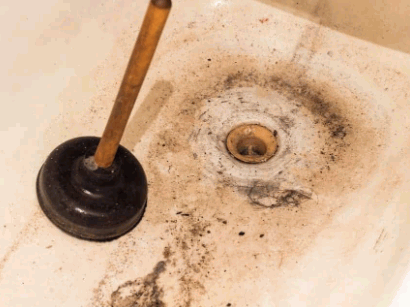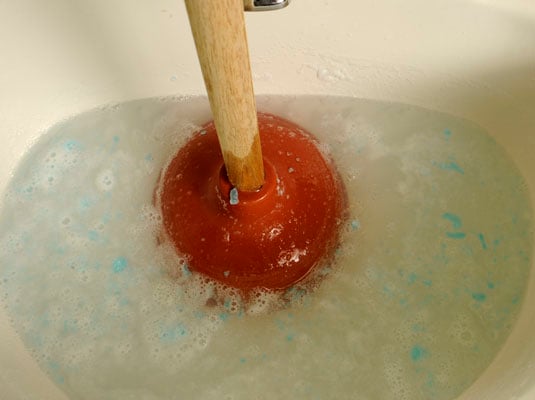Mastering Plunger and Drain Cleaners: Crucial Advice
Mastering Plunger and Drain Cleaners: Crucial Advice
Blog Article
Were you on the lookout for additional info concerning A Guide to Plungers (and How to Use Them)?

Introduction
Appropriate maintenance of home drains is important for avoiding clogs and guaranteeing smooth water flow. Among the secret tools in every property owner's toolkit is the plunger, along with different drainpipe cleaners designed to take on persistent clogs properly. This post checks out how to utilize plungers and drainpipe cleaners properly to keep your drains pipes streaming easily.
Section 1: Understanding Bettors
Kinds of Plungers
There are several sorts of bettors available, each made for various sorts of drains pipes and blocks. The most typical kinds consist of cup plungers, flange plungers, and accordion bettors.
Just How Plungers Job
Bettors work with the principle of creating pressure and suction to dislodge clogs. When appropriately applied over a drain, they produce a vacuum that can pull out particles or separate clogs.
Selecting the Right Plunger
Selecting the best plunger depends upon the kind of drainpipe and the nature of the blockage. Cup plungers are perfect for sinks and tubs, while flange bettors are much better fit for toilets due to their layout.
Usual Errors with Plungers
Staying clear of these blunders ensures effective plunging: improper seal around the drainpipe, inadequate pressure, and unclear bordering debris.
Area 2: Utilizing Plungers Efficiently
Prep work
Before diving, guarantee the bettor covers the drain completely and develops a tight seal. Clear any visible debris around the drain opening.
Method
Beginning with gentle diving activities to build suction. Boost stress gradually, utilizing a constant rhythm. Repeat as necessary up until the drainpipe gets rid of.
Repairing Tips
If plunging doesn't work, try changing the seal, using oil jelly for a far better seal, or making use of a various sort of bettor.
Area 3: Understanding Drainpipe Cleaning Company
Sorts Of Drainpipe Cleaning Company
Drain pipes cleansers can be chemical or enzymatic. Chemical cleaners use strong chemicals to liquify obstructions, while chemical cleaners use all-natural enzymes to break down raw material.
Exactly How Drainpipe Cleaning Company Job
Chemical cleansers react with blockages to dissolve them, while chemical cleaners break down organic materials like hair and oil without hurting pipes.
Safety and security Factors to consider
Always wear handwear covers and eye protection when making use of chemical drainpipe cleaners. Ensure ample ventilation and adhere to producer instructions meticulously.
Eco-Friendly Alternatives
Think about using vinegar and baking soft drink or enzyme-based cleansers for environment-friendly choices that are much safer for pipelines and the atmosphere.
Section 4: Utilizing Drainpipe Cleansers Effectively
Application Techniques
Put chemical cleansers straight into the drain opening. Permit them to work for the recommended time before purging with hot water. Enzymatic cleansers ought to sit over night.
Safety measures
Avoid mixing various kinds of cleansers, as this can create toxic fumes. Never ever use chemical cleansers together with a plunger, as spilling can occur.
Taking Care Of Stubborn Blockages
For persistent blockages, take into consideration using a pipes serpent or calling a professional plumbing technician to stop damage to pipes.
Final thought
Finally, understanding how to utilize bettors and drainpipe cleansers properly is important for maintaining healthy plumbing systems. By picking the right devices and techniques, home owners can deal with small blockages and prevent major pipes issues down the line.
4 DIY Ways to Unclog Drains
Wire Hanger
This age-old technique has been used by many an amateur plumber – to much success. Take any wire hanger, deconstruct its shape and leave a small hook shape on the end. Time to go fishing! Remove the shower or sink drain cover and snake the wire into the drain, wiggling and rotating it as you push it through. Dispose of the gunk that you remove and flush the drain with hot water. Rinse with a pan of boiling water for best results.
Plunger
Creating a suction in your drain can break up clogs caused by hair and soap residue build up. First, make sure you are using the correct type of plunger, one specifically for sinks or tubs. They are typically smaller than regular toilet plungers and often have a shallow suction cup. Regular plungers can work too but we’d recommend cleaning them first and finding a way to create better suction over the drain.
Baking Soda and Vinegar
This technique is a classic – and one of the most popular DIY drain unclog methods. Pour one cup of baking soda and one cup of vinegar down the drain and allow it to work its magic overnight. The next morning, flush the drain with boiling water. Repeat if necessary.
Drain Snake/Hair Clog Tool
If you know your clog is caused primary by hair, a drain snake/hair clog tool might be your best option. These tools can be purchased for under $10 at any hardware store and work well so long as the clog isn’t too deep in the drain.
https://www.callcatons.com/blog/four-diy-ways-to-unclog-drains/

Application Techniques
Put chemical cleansers straight into the drain opening. Permit them to work for the recommended time before purging with hot water. Enzymatic cleansers ought to sit over night.
Safety measures
Avoid mixing various kinds of cleansers, as this can create toxic fumes. Never ever use chemical cleansers together with a plunger, as spilling can occur.
Taking Care Of Stubborn Blockages
For persistent blockages, take into consideration using a pipes serpent or calling a professional plumbing technician to stop damage to pipes.
Final thought
Finally, understanding how to utilize bettors and drainpipe cleansers properly is important for maintaining healthy plumbing systems. By picking the right devices and techniques, home owners can deal with small blockages and prevent major pipes issues down the line.
4 DIY Ways to Unclog Drains
Wire Hanger
This age-old technique has been used by many an amateur plumber – to much success. Take any wire hanger, deconstruct its shape and leave a small hook shape on the end. Time to go fishing! Remove the shower or sink drain cover and snake the wire into the drain, wiggling and rotating it as you push it through. Dispose of the gunk that you remove and flush the drain with hot water. Rinse with a pan of boiling water for best results.
Plunger
Creating a suction in your drain can break up clogs caused by hair and soap residue build up. First, make sure you are using the correct type of plunger, one specifically for sinks or tubs. They are typically smaller than regular toilet plungers and often have a shallow suction cup. Regular plungers can work too but we’d recommend cleaning them first and finding a way to create better suction over the drain.
Baking Soda and Vinegar
This technique is a classic – and one of the most popular DIY drain unclog methods. Pour one cup of baking soda and one cup of vinegar down the drain and allow it to work its magic overnight. The next morning, flush the drain with boiling water. Repeat if necessary.
Drain Snake/Hair Clog Tool
If you know your clog is caused primary by hair, a drain snake/hair clog tool might be your best option. These tools can be purchased for under $10 at any hardware store and work well so long as the clog isn’t too deep in the drain.
https://www.callcatons.com/blog/four-diy-ways-to-unclog-drains/

I came across that page on A Guide to Plungers (and How to Use Them) when perusing the internet. Sharing is good. You just don't know, you will be doing someone a favor. I am grateful for your time. Return soon.
Call Today Report this page